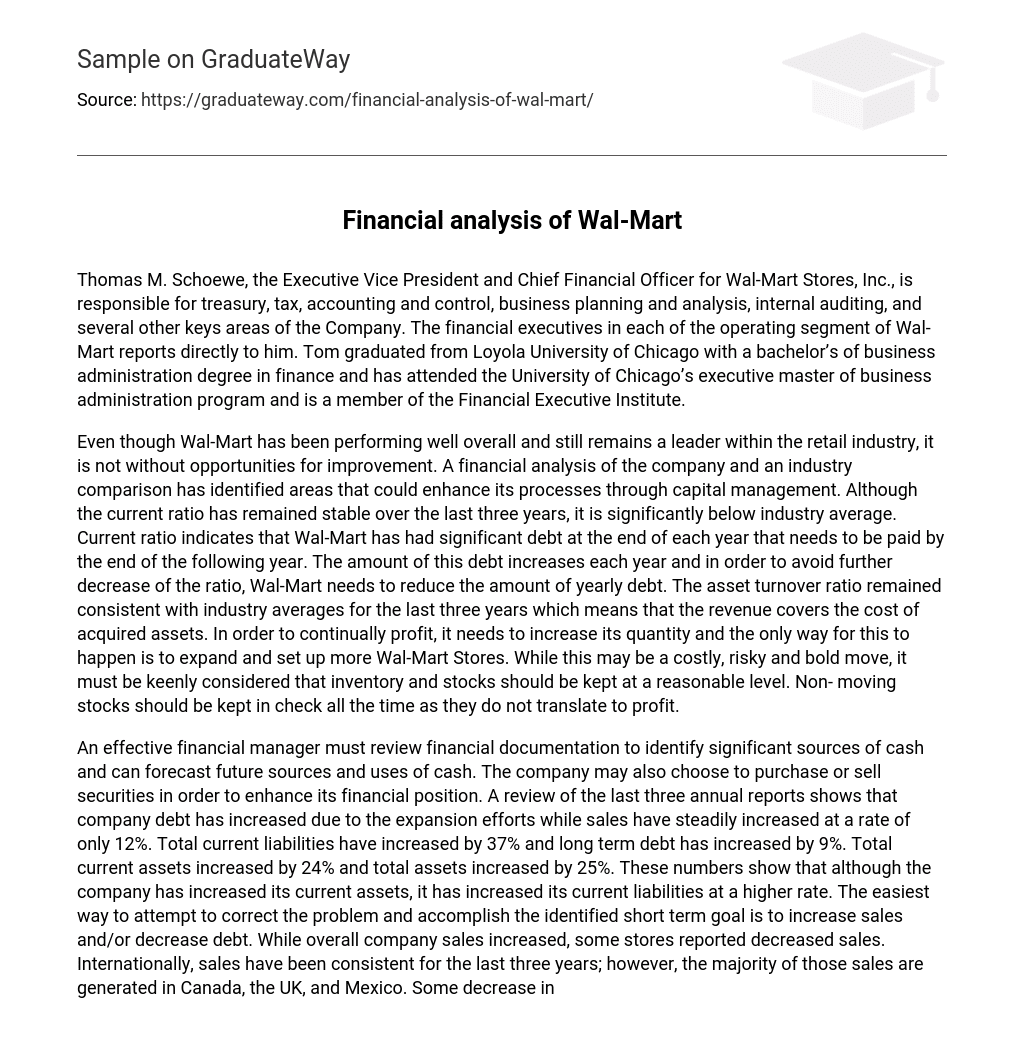Thomas M. Schoewe, the Executive Vice President and Chief Financial Officer for Wal-Mart Stores, Inc., is responsible for treasury, tax, accounting and control, business planning and analysis, internal auditing, and several other keys areas of the Company. The financial executives in each of the operating segment of Wal-Mart reports directly to him. Tom graduated from Loyola University of Chicago with a bachelor’s of business administration degree in finance and has attended the University of Chicago’s executive master of business administration program and is a member of the Financial Executive Institute.
Even though Wal-Mart has been performing well overall and still remains a leader within the retail industry, it is not without opportunities for improvement. A financial analysis of the company and an industry comparison has identified areas that could enhance its processes through capital management. Although the current ratio has remained stable over the last three years, it is significantly below industry average. Current ratio indicates that Wal-Mart has had significant debt at the end of each year that needs to be paid by the end of the following year. The amount of this debt increases each year and in order to avoid further decrease of the ratio, Wal-Mart needs to reduce the amount of yearly debt. The asset turnover ratio remained consistent with industry averages for the last three years which means that the revenue covers the cost of acquired assets. In order to continually profit, it needs to increase its quantity and the only way for this to happen is to expand and set up more Wal-Mart Stores. While this may be a costly, risky and bold move, it must be keenly considered that inventory and stocks should be kept at a reasonable level. Non- moving stocks should be kept in check all the time as they do not translate to profit.
An effective financial manager must review financial documentation to identify significant sources of cash and can forecast future sources and uses of cash. The company may also choose to purchase or sell securities in order to enhance its financial position. A review of the last three annual reports shows that company debt has increased due to the expansion efforts while sales have steadily increased at a rate of only 12%. Total current liabilities have increased by 37% and long term debt has increased by 9%. Total current assets increased by 24% and total assets increased by 25%. These numbers show that although the company has increased its current assets, it has increased its current liabilities at a higher rate. The easiest way to attempt to correct the problem and accomplish the identified short term goal is to increase sales and/or decrease debt. While overall company sales increased, some stores reported decreased sales. Internationally, sales have been consistent for the last three years; however, the majority of those sales are generated in Canada, the UK, and Mexico. Some decrease in revenue may be the result of rapid development of new stores in the International Segment. An option to decrease the amount of debt and increasing sales would include slowing the expansion process in less productive areas and concentrating on the more productive markets.
Work Cited
Walmart http://www.walmartfacts.com/content/default.aspx?id=5
Brealey, R., Myers, S., & Marcus, A. (2001). Fundamentals of corporate finance, third edition. New York: McGraw-Hill.





